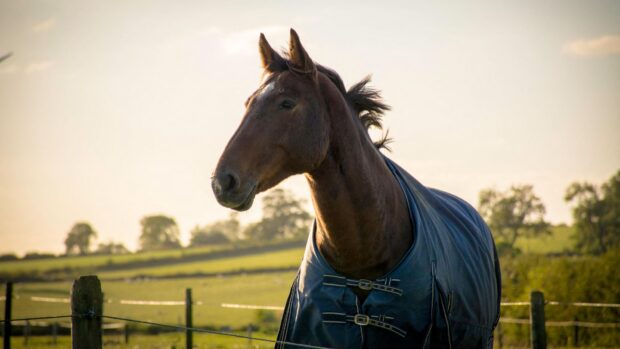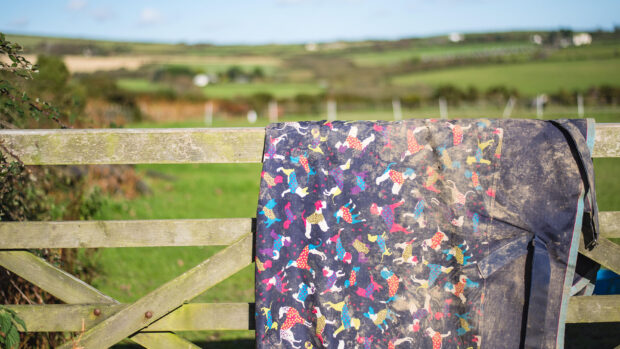With UK temperatures fluctuating, you might now be looking to dig out a thinner rug or possibly give your horse an extra layer. But is it really the best thing to do? Not necessarily, according to equine experts. Here are nine things to consider when assessing whether your horse is feeling cold – and if you’re still unsure, check out our horse rugging temperature guide.
1. Horses have a wide thermoneutral zone
A horse feels cold when the weather creates temperatures below 0°C. They feel hot when it reaches 25°C. The area between these two is the horse’s thermoneutral zone.
2. This zone is huge compared to ours
Humans have a much narrower thermoneutral zone of between 25 and 30°C. So when we think it’s cold outside, horses still feel comfortable, which is why we shouldn’t judge adding a rug by how cold we are.
3. Eating keeps them warm
A horse’s core body temperature is 38°C and thermoregulation — fuelled by energy stored in food the horse eats — helps maintain it. Heat is generated by breakdown of food either inside the cells of the body or by fermentation of fibre within the hindgut.
4. Rugging unnecessarily leads to weight gain
Horses use a considerable amount of energy to keep warm and so, if he is too heavily rugged, excess energy will be deposited as fat.
5. They hold heat better than we do
Due to their fur coats, horses will not lose body heat as rapidly as we do. They lose heat from the skin surface, through breath, faeces and urine, and through contact with colder surfaces, such as the ground.
6. Equines are designed to cope with the cold
When the temperature drops below 0°C, the horse keeps heat in by an increased metabolic rate. He will also seek shelter, his blood flow will decrease to let his limb temperature drop and, if it gets really cold, he’ll start shivering.
7. Keeping warm is a balancing act
Body temperature is a balance between heat produced and lost. In the cold, the horse loses heat more rapidly and must increase heat production and/or decrease heat loss to maintain temperature.
8. Don’t judge how warm they are by the ears
Feeling your horse’s ears, face or legs is a poor indicator of how warm they are. Instead place your hand inside the rug behind the withers. If it feels cold, consider an extra rug. If it’s damp, he’s probably too warm.
9. So in conclusion…
Most horses will not need rugging until temperatures dip to 5-10°C. Older, younger, thinner or clipped horses will need rugs sooner.
You might also be interested in:

Which rug should I put on my horse? H&H’s helpful guide to help you decide

12 rain sheets/no-fill turnouts to protect your horse from showers

A pick of the best lightweight turnouts for changeable weather

Best medium weight turnout rugs for chillier days

12 warm heavyweight turnouts for the winter

Subscribe to Horse & Hound magazine today – and enjoy unlimited website access all year round
Horse & Hound magazine, out every Thursday, is packed with all the latest news and reports, as well as interviews, specials, nostalgia, vet and training advice. Find how you can enjoy the magazine delivered to your door every week, plus options to upgrade your subscription to access our online service that brings you breaking news and reports as well as other benefits.




